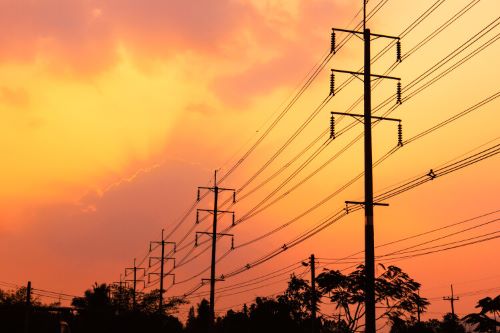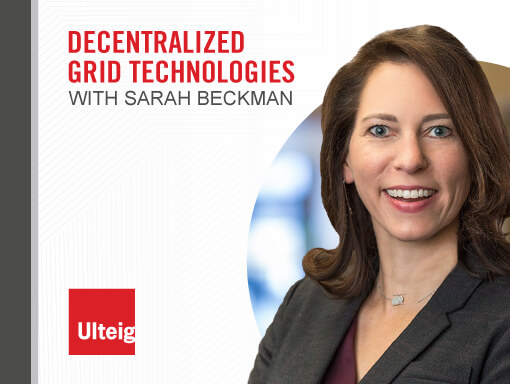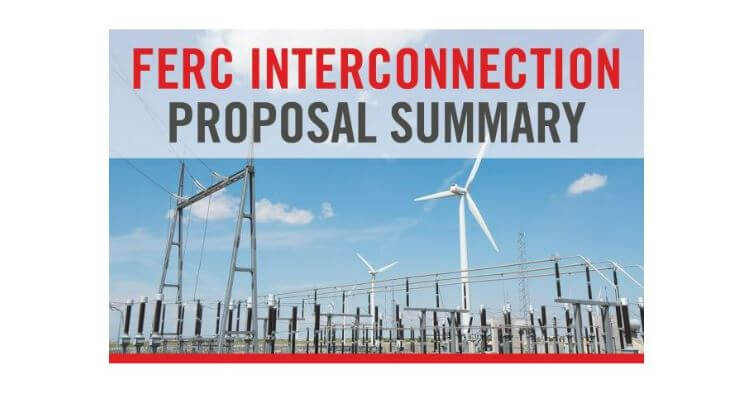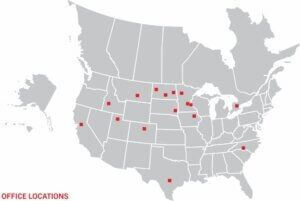How FERC Order 881 Will Impact Utilities

December 13, 2022
Updated December 11, 2023
As utilities and power providers navigate evolving legislation to transition to increasingly cleaner and more reliable energy, new regulations are providing guidance to achieve federal goals.
Ambient Adjusted Ratings (AARs) are one regulatory requirement that utilities are currently facing. While AAR will help with congestion of transmission lines and will enable utilities to manage grid modernization and the capacity more effectively, it will come with its own challenges.
To improve the accuracy, transparency and effectiveness of transmission line ratings, the Federal Energy Regulatory Commission (FERC) issued order 881. FERC 881 will quickly become a vital component to maximizing available transmission capacity among the clean energy transition, especially as the Inflation Reduction Act goes into effect, driving increased demand for renewable generation and interconnection locations. By providing updated guidance on transmission lines and reporting procedures, FERC hopes to upgrade transmission capacity to empower utilities and renewable energy generation facilities to capitalize on renewable energy initiatives.
While adjusted ambient ratings (AARs) require less frequent measuring, updating and adjusting for the ambient conditions and temperatures of the region at regular time intervals, dynamic line ratings (DLRs) enable constant measuring and adjusting in accordance with the immediate conditions. DLRs are part of a significant effort to oversee the congestion of transmission lines and to enable utilities to manage grid modernization and capacity more effectively.
How are you managing your clean energy resilience? Read this recent article written by Ulteig’s Renewables market director about the keys to integrating resilience into your clean energy development.
Implementing robust and accurate DLR capabilities into utilities’ infrastructure requires advanced technology and reliable connectivity, including digital technologies such as artificial intelligence and 5G. This technology then enables monitoring systems to capture real-time data including thermal load management and ongoing weather conditions so it can calculate the maximum load capacity based on these conditions.
Leveraging and updating existing infrastructure can alleviate future grid demands and can reduce potential grid congestion. AARs and DLRs will effectively increase the capacity of existing transmission lines based on demand management. With an effective date of July 12, 2025, utilities need to take action to update their infrastructure and monitoring systems to maintain compliance as well as to keep up with ongoing clean energy initiatives.
What Does FERC 881 Entail?
FERC outlined specific requirements for public utility transmission providers to enhance their systems and improve their grid management capabilities. While some utilities already have adjusted or dynamic line rating processes in place, all must comply with the standards set forth in Order 881, including:
- Implementing ambient-adjusted ratings (AAR) on transmission lines over which they provide service
- Using uniquely determined emergency ratings
- Maintaining a database of transmission owners’ transmission line ratings and methodologies on the transmission provider’s Open Access Same-Time Information System (OASIS) site or other password-protected websites.
- Sharing a transmission line rating and methodologies with providers and market monitors in RTOs and ISOs
Regulations for transmission lines and other energy operations are set forth by FERC, which oversees NERC, an agency focused on sustaining the operations and safe, reliable energy transmission across North America. Utilities who are focusing on meeting compliance standards for FERC/NERC will need to ensure their facilities’ ratings are updated in accordance with ongoing requirements. Ulteig’s transmission planning and compliance efforts are led by Manisha Ghorai, who has been monitoring the updates and working to understand the implications for transmission providers.
Projected Benefits of FERC 881
With diligent transmission line planning and design that is proactive and anticipates future demands, public utilities can maintain reliability, safety and federal compliance while increasing their capacity and demand management. DLR systems can augment the interconnection process and improve renewable energy connection to the grid while simultaneously reducing renewable energy curtailment. This will especially benefit wind power initiatives, which are often the recipients of significant curtailment efforts.
Check out how Ulteig helped with line planning for a 600-megawatt wind farm project in northeastern South Dakota.
FERC 881 will also lead to reduced congestion in the power system, a more common occurrence with increased renewable energy assets coming on board. Through standard, diligent monitoring and tracking of transmission lines, utilities can optimize asset utilization and maintain their existing infrastructure while reducing the need to heavily invest in developing new lines or other systems.
A DLR system is also able to provide insights into weather patterns and concerning conditions that can have an effect on the integrity of infrastructure. Grid resilience is a concern of many utilities and transmission owners who are navigating systems, technology and infrastructure upgrades in order to maintain reliability and durability during extreme weather events.
Through cost-effective means of transmission as a result of reduced congestion, reliable assets and faster integration of clean energy generation, utilities can deliver more reliable and affordable power to consumers. This can result in not only lower costs for end-users but more reliable power as well.
FERC 881 Impact On Utilities
While the benefits of FERC 881 are clear, utilities need to take action to meet the requirements in time. Utilities under FERC jurisdiction must meet the standards by July 12, 2025. Since ensuring existing transmission lines are rated with AAR systems has not been a requirement until this point, many utility companies will be searching for ways to add and retrofit this equipment to their existing infrastructure.
With the turnaround for these requirements and the strain on current lead times on certain supplies and equipment, utilities may also face challenges integrating monitoring capabilities in time.
Asset management is becoming increasingly important to power providers and transmission owners. With a focus on NERC compliance and diversifying power portfolios, utilities will need comprehensive designing and engineering initiatives to take place in the coming years.
 “The rising congestion and curtailment costs requires more efficient and optimized transmission and distribution infrastructure on a holistic, nationwide level,” said Sarah Beckman, PE; Ulteig’s Vice President of the Power Market. “Overlaying that need with the supply chain and talent shortage, it really highlights the need to find new ways to adopt technologies and delivery models to support grid transformation.”
“The rising congestion and curtailment costs requires more efficient and optimized transmission and distribution infrastructure on a holistic, nationwide level,” said Sarah Beckman, PE; Ulteig’s Vice President of the Power Market. “Overlaying that need with the supply chain and talent shortage, it really highlights the need to find new ways to adopt technologies and delivery models to support grid transformation.”
Prepare For FERC 881
Through a consultative approach that is anticipatory in nature, transmission owners and power providers can plan for long-term growth, success and compliance. FERC 881 is a flagstaff example of how proactive planning, legislative engagement and comprehensive engineering consulting can keep utilities ahead and navigate ever-changing landscapes.
New legislation and initiatives will require immense planning, designing and engineering to take place for power utilities of all shapes and sizes. Ulteig brings a specialization in the design and engineering of substations, transmission lines and distribution grid modernization through a consultative, proactive approach. Our robust experience working across sectors, including renewables, will move your power delivery forward to a cleaner, safer and more reliable future.
Interested in learning more? Contact us to talk with our experts about how we can help make your next project easier, more effective and more affordable.
WHAT MAKES ULTEIG DIFFERENT?
From global energy producers to locally funded cities and private developers to government agencies, the clients we serve encompass a broad range of relationships and projects. Find out why Ulteig is a leader in the engineering industry.
Contact Us



